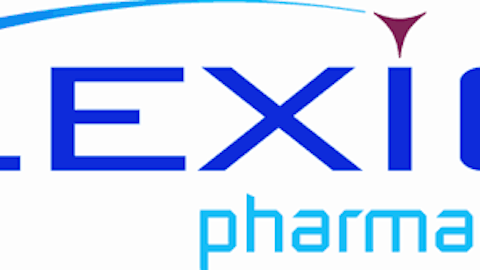There is perhaps nothing scarier than a cancer diagnosis. A study in 2010 conducted by Cancer Research UK demonstrated this to the “T,” when it asked 2,070 respondents what they were most scared of out of a list of 11 choices. Included in this list, among cancer, were being in a car wreck, old age, having a heart attack, and developing Alzheimer’s disease. Needless to say, 20% of respondents (the clear leader of the 11) chose cancer as their No. 1 fear.
It’s not hard to understand why people maintain that fear, as statistics these days demonstrate that men have about a one-in-two chance of developing some form of invasive cancer at some point in their lives, while women run approximately a one-in-three risk. It’s certainly one reason why so much time and money pours into cancer research.

Source: U.S. Army RDECOM, Flickr.
The Food and Drug Administration is attempting to do its part by expediting the review process of drugs that exhibit “substantial improvement over available therapies for patients with serious or life-threatening diseases.” Under this new breakthrough therapy designation, the hope is that potentially revolutionary and curative medicines can be brought to market faster instead of getting buried under red tape.
As you might suspect, cancer is expected to be among the bigger beneficiaries of the breakthrough therapy designation given the life-threatening nature of most cancer types. However, early on (the breakthrough designation has been around for less than a year), no disease looks as if it’s going to be combated head on more than chronic lymphocytic leukemia, or CLL, for short.
Tackling CLL one step at a time
CLL is a slowly progressing disease, often found in older adults, that specifically affects B-cell lymphocytes. Under normal circumstances, B-cell lymphocytes would originate in the bone marrow and go on the produce antibodies that help us fight infections. In the case of CLL, cancerous B-cell lymphocytes grow out of control in the blood and bone marrow, which eventually crowds out red blood cells. Although the median case for survival of CLL is eight to 10 years (depending on staging and variation of the disease, of course), the treatment options currently available leave a lot to be desired.

The next big leap in treating CLL
While the aforementioned therapies are a step in the right direction, researchers understand that we still need to do much better with forecasts from the American Cancer Society calling for 15,680 new CLL diagnoses this year, on top of the roughly 113,000 people CLL already affects. The good news is that it appears a trio of breakthrough therapies could be right around the corner.
Of the slightly more than two-dozen breakthrough therapy designations divvied out by the FDA since its inception, three have gone toward drugs that are CLL-targeted therapies. Let’s have a closer look at each, and see how this could mean big news for CLL sufferers as well as the developing biopharmaceutical companies in question.
Perhaps no company has created more of a buzz among relapsing/refractory CLL patients than Pharmacyclics, Inc. (NASDAQ:PCYC). Its experimental drug ibrutinib, which has received three separate breakthrough designations, wowed investors with its phase 2 results, which demonstrated a 96% PFS at 14.4 months in a 31-patient trial (i.e., only one patient of 31 discontinued due to progression of the disease). The overall response rate in the lower dose group was a whopping 81%, and when nodal responses were added, 87% of patients experienced more than a 50% reduction in lymph nodes. Pharmacyclics, and its licensing partner Johnson & Johnson (NYSE:JNJ), have already filed a new drug application for ibrutinib to treat CLL, and I have a hard time believing it won’t soon find its way onto pharmacy shelves.
For treatment-naive patients, Roche Holding Ltd. (ADR) (OTCMKTS:RHHBY)’s obinutuzumab, also referred to as GA101, may be the answer. Also a recipient of the FDA’s breakthrough therapy designation, GA101, in combination with chlorambucil, was shown to be significantly more effective than MabThera/Rituxan plus chlorambucil in treatment-naive CLL patients in terms of PFS (23 months versus 10.9 months), and in reducing the risk of the disease worsening or death compared to using just chlorambucil alone (an 86% reduction). GA101 was working so well that an independent monitoring committee stopped the phase 3 trial about a year early because the top-line data was that overwhelmingly in favor of GA101’s superiority over Rituxan. The FDA has granted GA101 a priority review with an action date on or before Dec. 20, 2013. Like ibrutinib, I have a strong suspicion it will be approved.
Finally, within the past few days GlaxoSmithKline plc (ADR) (NYSE:GSK) and Genmab received the breakthrough therapy designation for Arzerra to expand its indications to include treatment-naive CLL patients. The assumed expedited review comes on the heels of an impressive 447-patient late-stage study of Arzerra in combination with chlorambucil compared to a placebo arm of chlorambucil as a monotherapy. In the study, median PFS improved by 9.3 months (22.4 months versus 13.1 months), while the safety profile of the two arms was similar. Not to sound like a broken record, but, given the enormity of improvement, I don’t see how Arzerra doesn’t gain this additional indication.
We’re still obviously a long way from curing cancer, but the progress in treating CLL via the breakthrough therapy designation is undeniable. All three therapies have a genuine shot at adding significant quality of life to CLL patients’ lives, and all aforementioned companies developing these breakthrough designated drugs stand to benefit in a big way.
The article Is the Tide About to Turn in the Fight Against Chronic Lymphocytic Leukemia? originally appeared on Fool.com.
Fool contributor Sean Williams has no material interest in any companies mentioned in this article. You can follow him on CAPS under the screen name TMFUltraLong, track every pick he makes under the screen name TrackUltraLong, and check him out on Twitter, where he goes by the handle @TMFUltraLong.The Motley Fool owns shares of, and recommends Johnson & Johnson.
Copyright © 1995 – 2013 The Motley Fool, LLC. All rights reserved. The Motley Fool has a disclosure policy.





